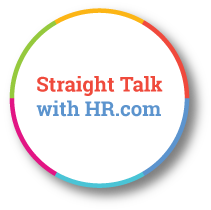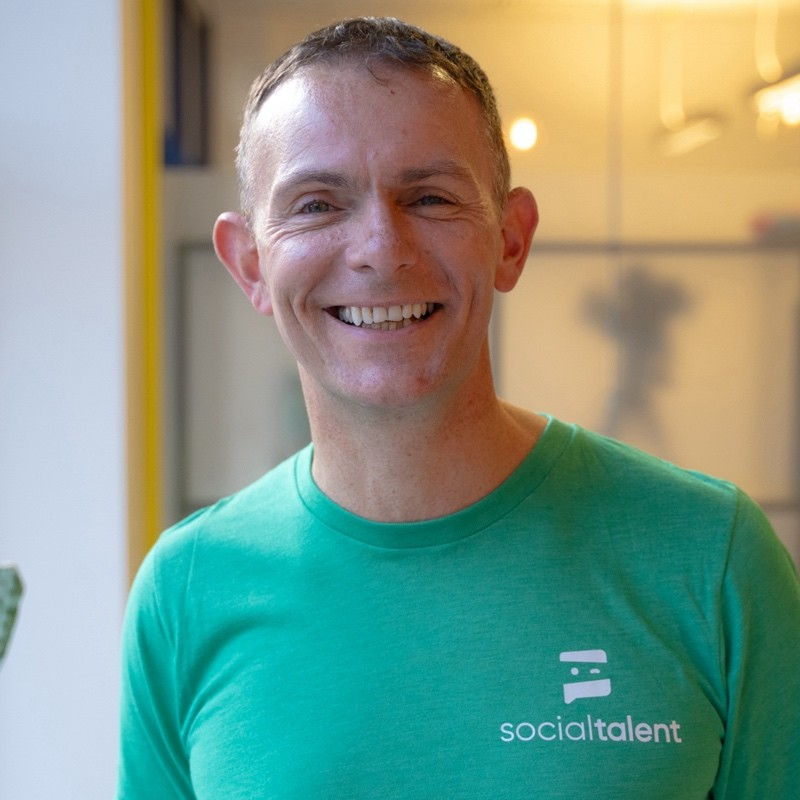“AI Is Shaping The Future of Talent Acquisition”
Exclusive interview with Johnny Campbell, CEO of Social Talent
Posted on 01-28-2025, Read Time: 15 Min
Share:


 |
“New TA roles will emerge as AI continues to reshape the industry. Specialist roles will remain. Candidate-facing roles, however, will be significantly reduced. Meanwhile, sourcers’ role will evolve into that of a market expert who helps guide candidates,” said Johnny Campbell, CEO of Social Talent |
Excerpts from the interview:
Q: What will be the impact of Generative AI tools on the recruiting industry and recruiters?
Johnny: One of the challenges the recruiting industry is facing is the time it takes to improve recruitment efforts.It takes a long time to conduct searches, handle outreach, manage follow-ups, and prepare for every interview, not to mention researching each job. AI tools reduce that workload by 50%. More importantly, they help make everyone consistently better. The gap between poor and high-quality recruiting has always been significant, but now the variance has decreased. Those below average are now at least as good as those in the middle. With these tools providing research, insights, and sourcing, there’s no excuse not to improve.
Previously, people might have said, "I'm not good at Boolean search," or "I don't know how to write effective emails or conduct research." There’s no excuse anymore. You can just open your phone, speak, and get answers from ChatGPT, Gemini, or other platforms. This shift is raising productivity in recruiting teams and increasing the quality of their output.
This doesn’t mean we’ll need half the recruiters. There will likely be fewer recruiters, but they will focus on higher-value work. For example, Cisco’s recruiting team realized that recruiters were doing screening interviews, while hiring managers were handling full behavioral interviews. It’s more cost-effective and scalable for recruiters to handle the first round of behavioral interviews. And since recruiters are more consistent, they can ensure that the recruiters are better at this than any hiring manager in the organization.
We’ve helped recruiters upscale their skills, particularly in behavioral interviewing, which reduces one of the stages in the hiring process. This is just one example of how recruiters are moving into higher-value roles, contributing more strategically to the hiring process, and taking on more responsibility.
As recruiters become more embedded in the hiring process, focusing on higher-value tasks and fewer administrative duties, the need for the same number of recruiters will decrease. However, this doesn’t mean there will be a drastic reduction in headcount. Instead, recruiters will be doing higher-level work, including tasks traditionally handled by HR colleagues, which ultimately enhances hiring quality and processes.
In the end, I believe we’ve likely reached peak recruiter. The number of recruiters in the market will probably never reach the same levels as it did in 2022. Over time, we will see a gradual reduction in recruiter numbers, possibly faster than anticipated. But the role of a recruiter is evolving to be more sophisticated, value-added, and professional than ever before.
Q: How will AI impact talent managers and how will their role evolve?
Johnny: We’ll see more hiring managers self-serving. For example, during my demonstration, I showed 15 different things that recruiters could do using ChatGPT, but in reality, hiring managers could do all of those tasks themselves, reducing the need for a recruiter.As hiring managers become more sophisticated, they will take on much of the recruiting process themselves, including tasks like creating shortlists, conducting engagement, performing role analysis, and making recommendations—all of which can be handled by AI.
However, 90% of hiring managers aren’t that sophisticated, and they don’t hire frequently—perhaps only two or three times a year. These managers will still require support from recruiters. So, we'll see a mix: a group of highly skilled hiring managers who have the tools to manage recruitment independently, and another group who still need advice and support.
But instead of the traditional recruiter role, hiring managers will seek consultative talent advisors. They won’t want someone simply pushing CVs or organizing interviews—that’s a thing of the past.
This shift will likely lead to fewer recruiters in the market. It won’t be a 50% reduction, but there will be changes over time. We’re already seeing at this conference that many technology providers are targeting hiring teams, not just recruiters. For example, LinkedIn’s recent update in October 2024 is aimed at hiring managers, although it’s marketed under the “LinkedIn Recruiter” label. I’d call it “LinkedIn Hiring Manager” instead.
Looking ahead, I believe new TA roles will emerge as AI continues to reshape the industry. The current roles are largely organized into three groups:
- Candidate-facing roles (such as sourcing and interview scheduling).
- Business-facing roles (like talent advisors and business partners).
- Specialist roles (like employer branding, early career specialists, and executive search experts).
Specialist roles will remain, but they’ve always been a smaller part of the ecosystem. Candidate-facing roles, however, will be significantly reduced. We’ve already seen the decline of scheduling roles, as hiring managers and candidates don’t need them anymore. Candidates still value advisors for their careers, so the sourcer role will evolve into that of a market expert who helps guide candidates.
The administrative tasks of sourcing and engagement will be automated, leading to a major reduction in those roles. The true long-term role for recruiters will be as advisors. There will be fewer of these advisors because some hiring managers will become self-sufficient with the right tools, but many will still need guidance.
Think of it like the HRBP (Human Resources Business Partner) role. HRBPs are needed for expertise in employment laws, payroll, compensation, and navigating complex issues. Similarly, talent business partners (TBPs) will provide the expertise needed for recruiting, hiring, selling, and influencing candidates. A hiring manager who recruits frequently will become more skilled and may rely less on a TA business partner over time. But for less experienced managers, the need for an advisor will still be there.
This is the evolution I see happening in the next few years as AI continues to drive change in the talent acquisition space.
Q: As AI and technology increasingly play a role in the talent acquisition process, how do you think TA leaders should evolve their mindset from focusing on team size and cost metrics to embracing technology as a value creator that aligns with the organization's broader goals?
Johnny: I was at a forum with 50 TA leaders in Seattle back in October, and we were discussing AI and its role in reducing team size. Nearly everyone there said, "This won’t happen. I won’t let my team be reduced." But the reality is, the job isn't about protecting your team—whether it’s 50, 100, or 200 people. The core job is to deliver quality talent to the organization. Inevitably, the model is going to change, and you need to be open to new ways of doing things.You should embrace technology, and if that leads to a smaller team, then so be it. But there’s often fear involved because leaders tend to equate their power with the size of their team and budget. The business doesn’t see it that way. If your performance is measured by traditional metrics like cost per hire and speed of hire, you're speaking a different language than the business. These are cost-centered measures, and ultimately, they put you in a position where your job could be reduced.
On the other hand, if you see yourself as a value creator, that changes the conversation. You should align your metrics to show how TA drives higher productivity, more innovation, increased sales, or more billable hours. When you can connect TA to the business’s core goals—revenue growth and profitability—you position yourself as a function that directly contributes to those goals.
Once you're aligned with that mindset, you can ask, "How can technology help me bring in more talent?" Or even better, "How can I offer solutions that help the business get work done, drive better revenue, and increase profitability?" This could mean recommending technology that eliminates the need for hundreds or even thousands of workers.
You need to realize that your role isn’t just about supplying talent at the lowest possible cost. If that's how you're framing your job, you're already on the wrong track.
Q: You mentioned Netflix's disruption of the movie industry—can AI do the same for the talent acquisition (TA) industry? Could it restructure and revolutionize the space?
Johnny: Yes, I do think there’s a comparison. Look at how Netflix completely disrupted the movie industry by eliminating brick-and-mortar stores, DVD manufacturers, and VHS distributors. Instead, we now have a direct-to-stream model with subscriptions. Similarly, imagine a world where candidates submit thousands of applications in seconds, but hiring managers are overwhelmed with resumes they don’t trust. This creates a poor process. AI could streamline that process by better matching talent with demand in a more automated way.What that looks like exactly, I don’t know. But it’s coming. Right now, we’re integrating AI into existing recruitment workflows—job applications, assessments, interviews, offers, and onboarding. What Netflix did was make the traditional film acquisition process more efficient by adding technology. Over time, that process could completely change, and a new model could emerge. This kind of transformation has already happened in many industries, and it's inevitable for TA as well.
Q: What are some of the biggest challenges companies face when trying to implement AI, especially for larger-scale use? How can they alleviate these concerns?
Johnny: One of the biggest challenges is regulation, specifically with the upcoming EU AI Act, which comes into law on February 5, 2025. It’s creating some fear around AI implementation. The EU AI Act calls out hiring as a high-risk area, which means companies need to be more cautious about how they use AI in recruitment. A client of Boston Consulting Group came to them with 300 objections to using AI in hiring. However, after working through them with their expert team, they managed to reduce it to zero.If you look deeper into the EU AI Act, and similar legislation in places like California, you'll find that it doesn’t ban AI in hiring—it just imposes a higher burden of care. Companies need to ensure that candidates are treated fairly, the process is transparent, and the candidates know what’s happening. It’s all about increasing transparency and giving candidates the right to address any concerns.
The fear of how to properly implement AI is what's holding many companies back. But as more companies successfully use AI and share their experiences, others will feel more comfortable. For instance, McDonald's uses AI in their recruitment process, powered by Paradox, and they make 2 million hires a year. If they can do it, others can too.
Industries that are typically more risk-averse, like banking and pharmaceuticals, are slower to adopt AI in recruitment. But once a few companies in these sectors start using it successfully, others will follow suit. We’re currently in the "wait and see" phase, but eventually, there will be a tipping point where industries fully embrace AI.
Error: No such template "/CustomCode/topleader/category"!

